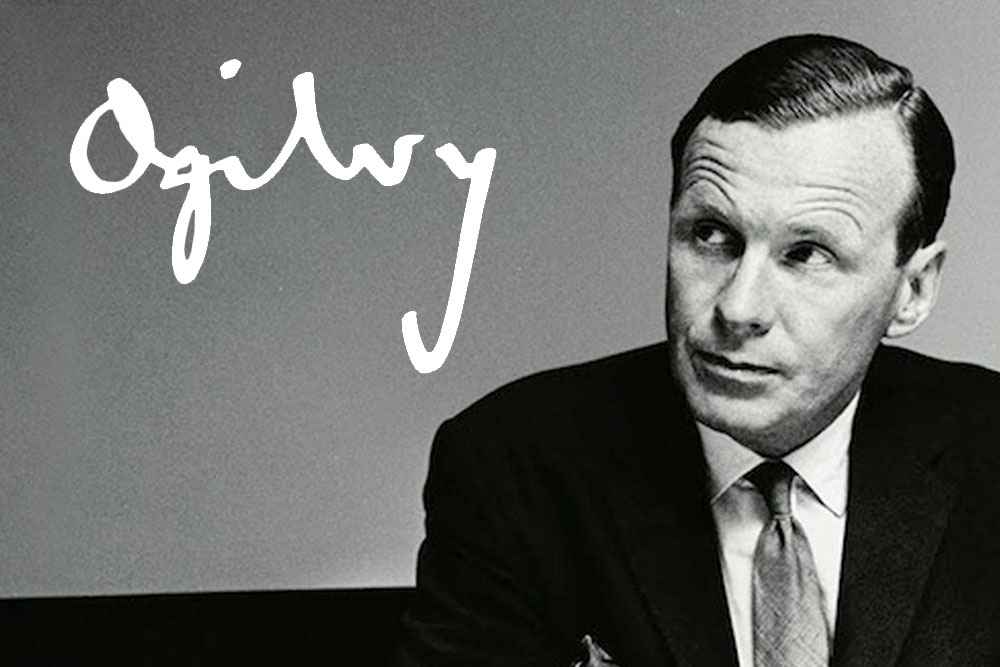
Principal – DW Creative Marketing
Dave Wieser is Principal of DW Creative Marketing, whose mission is to “Help the Doers create their legacy.” His career of 20+ years in the advertising and marketing industry has led to a wide range of experiential roles, including media selling, media buying/planning, marketing strategy, research, business intelligence and data analytics…
Analysis from a Sage of the Mad Men Era
By Dave Wieser David Ogilvy is an advertising genius. If there was to be a Mount Rushmore of Ad Men, his legacy would leave him firmly etched among the greats. Ogilvy is responsible for growing iconic brands such as Rolls Royce, Guinness, Dove, and even nation states like Great Britain. It has been rumored that the hit television series Mad Men was inspired by his book, “Confessions of an Advertising Man.” I mean, he started an ad agency with $60,000 and sold it for almost $900 million in a hostile takeover from WPP. The final chapter of his 1983 book, “Ogilvy on Advertising,” contained thirteen predictions for the advertising industry, despite the author’s admitted disdain for “futurism.” Let’s take a look and see how marketing and advertising has changed (or hasn’t) in the past 35 years by answering one question: how have Ogilvy’s projections aged more than 30 years later? *This article explores predictions 1 – 7. Stay tuned for Part II. Prediction #1 The quality of research will improve which will generate a bigger corpus of knowledge regarding what works and what doesn’t. Creative people will learn to exploit this knowledge, thereby improving their strike rate at the cash register. We reached out to Kurt Bartolich of Guts Branding, who has been involved in brand positioning, quantitative, and qualitative research for all types of companies ranging from multi-nationals to small retailers. Kurt’s ability to connect research dots has informed many advertising campaigns. Here is Kurt’s response to Mr. Ogilvy’s first prediction: “Generally-speaking, I’d say Ogilvy’s prediction came true. Today, there is more sophistication and speed in marketing and advertising research. We have better technology and tools for measurement, advanced statistical modeling for analysis, more ways to sample, and more creative ways of gathering evidence to keep pace with changing consumer behaviors and lifestyles. At the time of his prediction, things like real-time testing, online panels, predictive analytics and machine-based learning were either just concepts or not even conceived. These have furthered what researchers can do for marketers. Conversely, advancements have also spawned DIYers whose research cuts at the core of objectivity, and professional survey takers, whose cheating through taking surveys multiple times, impact sample integrity and the quality of outcomes. Regardless of how far we’ve come in the social sciences, methodologies, technology and accessibility, the old adage, “good in, good out,” still matters. Asking great questions, sampling accuracy, finding meaningful stories in the data and leveraging those insights to help clients make smarter decisions, is still an art and one that will require smart humans for the foreseeable future.” Prediction #2 There will be a renaissance in print advertising. The accuracy of Ogilvy’s prediction depends largely upon the date of analysis. Print advertising did enjoy a rise in popularity in the years immediately following Ogilvy’s book. But with the advent of digital in the 2000’s, print advertising lost considerable market share. Total spending on print advertising has stayed relatively consistent since 1980, with a slight drop from $26.8 billion to $23.1 billion. However, print advertising as a percent of ad spend share has plummeted during that same time – from 50% of total ad revenue to only 11% in 2018. Consider that the ad revenue from Facebook alone is about $21 billion – nearly equal to print advertising’s entire share of the market. Despite all of this, print remains a trusted medium. 56% of consumers advocate for print as the “most trusted form of advertising,” and high-end, luxury brands still find it very desirable. In fact, data shows that a premium for print space has developed as it accounts for only 3% of ad consumption but more than 10% of ad revenue. Meanwhile, the decline in total circulation can have the benefit of culling an audience to only the most “engaged and loyal readers.” Prediction 3 Advertising will contain more information and less hot air. It’s hard to determine exactly what Ogilvy meant when he talked about “hot air,” but for the sake of argument we’ll assume he’s referring to a lot of talk with no meaning. We decided to take an unscientific approach when evaluating this prediction – reviewing a random sampling of TV commercials from the early 1980’s and today. TV commercials in the 1980’s sold the problem and made a point to promote competitive comparisons. It became clear after watching the older commercials that brands were much better at positioning. Brands consistently sold the problem then communicated exactly how their product offered the solution. Below is a quick table of ads we viewed, along with the category, position/benefit, and any competitive mention.| Year | Category | ID Competitor? Generic or Specific? | Position / Benefit |
| 1982 | Pest / Insect Spray | Aerosol Cans, generic | No Fumes |
| 1982 | Laundry Detergent | “Other leading brands,” generic | No Ring Around the Collar |
| 1982 | Intellivision Video Game | Atari, specific | Can “See” the Baseball Diamond |
| 1982 | Mobil Gasoline | None | Cleans Your Engine |
| 1982 | Tostitos | Other cheese-flavored snacks, generic | A Lot of Cheese Flavor, not Chip |
| 1982 | Shout Stain Remover | None | Removes Stains |
| 1982 | Old Spice | None | Eliminated Odor Plus Wetness |
| 1982 | TUMS Antacid | Rolaids, specific | More Acid Absorption than Rolaids |
| 1982 | Shield Detergent | “Other leading brands,” generic | Fights Odor Better |
| 1982 | Lady’s Choice | Roll-On and spray deodorants, generic | The “Solid” Antiperspirant |
| Year | Category | ID Competitor? Generic or Specific? | Position / Benefit |
| 2018 | T-Mobile | None | Unlimited Data |
| 2018 | KIA Motors | None | Eco-Hybrid that Goes Anywhere |
| 2018 | Bai Antioxidant Drink | None | 5 Cals, No Sweetener, Great Taste |
| 2018 | Sprint Telecommunications | Verizon, specific | Same Coverage, Save 50% |
| 2018 | GoDaddy Web Development | None | Make Your Idea “Real” w/ Website |
| 2018 | Wix Web Development | None | Website Creation for Novices |
| 2018 | Old Spice Male Deodorant | None | “She Nose Best” |
| 2018 | Tostitos | None | “Get Together” with Tostitos |
| 2018 | Tide Stain Remover | None | |
| 2018 | TUMS Antacid | None |
